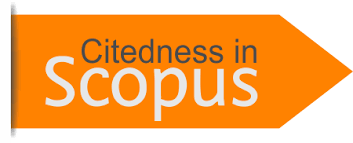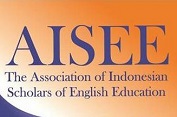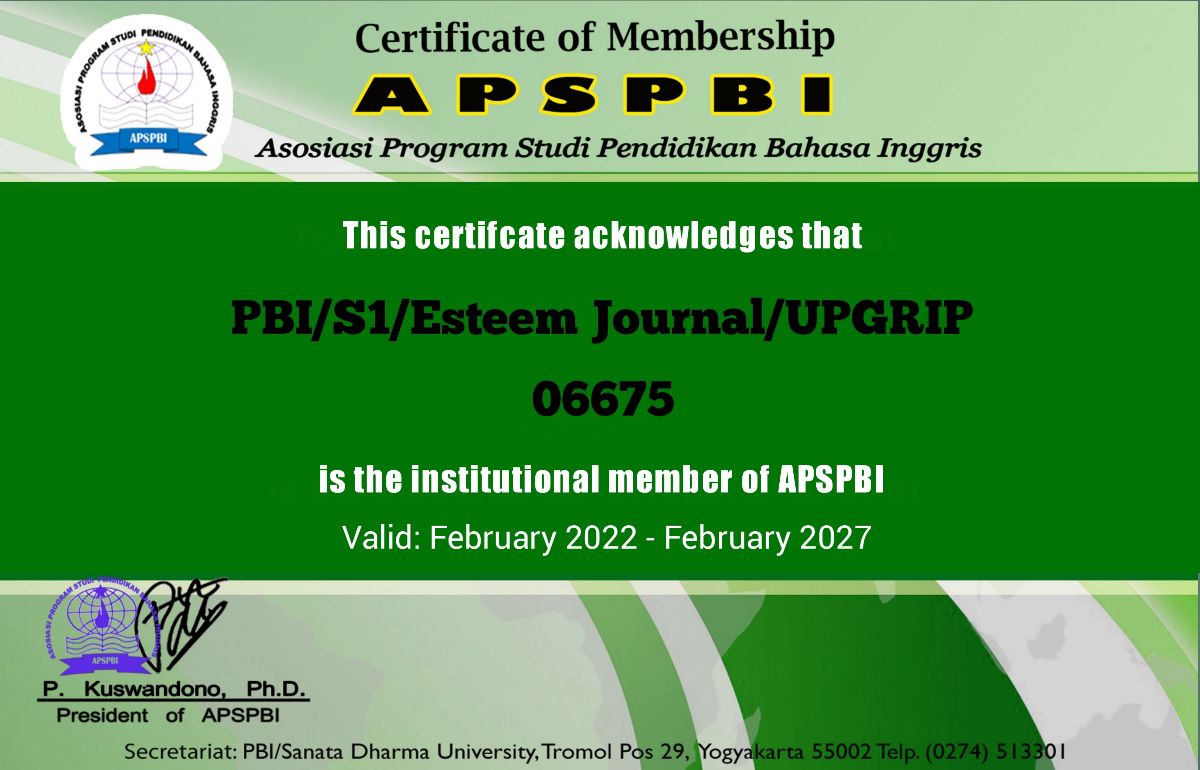GETTING STUDENTS ACTIVELY INVOLVED USING THE ‘MISTAKE BUSTER TECHNIQUE†TO IMPROVE THEIR NARRATIVE ESSAY
DOI:
https://doi.org/10.31851/esteem.v4i2.6273Keywords:
Mistake buster technique, improveAbstract
Checking higher Intermediate 2 level students’ narrative essay, an idea to get the students actively involved in improving their narrative essay came up. It could not be by just giving the score and gave it back to them. The mistakes can fossilize. So, the “Mistake Buster Technique†was applied. First, the students applied the “Mistake Buster Technique†by doing peer correction to their narrative essay in their first writing. Second, they used the Mistake Buster Technique†to find and correct the “unidentified mistakes†from their peer correction activity. Their first writing was used as the pretest, while the posttest was taken from their first periodic test. Based on the data analysis, the results of the pretest mean score is 15.48, and the posttest is 17.14. The mean difference is 0.004. The result showed that the ‘Mistake Buster Technique†significantly improves students’ narrative essay. It also minimized students’ grammatical errors. It was indicated by their grammar pretest mean score 3.36 that improved to 5.00 in their grammar posttest mean score. In additional, this technique allows the students to communicate with their peer in identifying and correcting the mistakes. Another benefit is they can collaboratively identify the possible mistakes themselves. It is a creative activity for the students to take over the role of correcting mistakes. Switching the role of the "mistake corrector" can be used to reinforce their critical thinking and problem solving.   In short, the†Mistake Buster Technique†is very effective and useful to correct their mistakes.
References
Hopkins, D (2008). A teacher’s guide to classroom action research (3rd.ed.). Buckingham: Open University.
Huynh, Hai K.P (2013). Getting Students Actively Involved Using “the Mistake Buster “technique. English Teaching Forum, IX (11), 1-3.
Jaya, A. Habibi, A. 2016. Fishbowl Technique and Learning Interest Effects on Speaking Achievement of SMK Sembawa. Jambi-English Language Teaching. 1(1)
Jaya, A. Hermansyah, Mortini, A. 2018. The Effect of Crawford Series Teaching (CST) on the Students’ Writing Achievement. ESTEEM: Journal of English Study Program. 1(1).
Nozadze, Alexandra (2012). Dealing with Fossilized Errors while Teaching Grammar. Journal of Education, 1(1):41-46.
Downloads
Published
Issue
Section
License
Copyright Notice
Authors who publish with this journal agree to the following terms:
In order to assure the highest standards for published articles, a peer review policy is applied. In pursue of the compliance with academic standards, all parties involved in the publishing process (the authors, the editors and the editorial board and the reviewers) agree to meet the responsibilities stated below in accordance to the Journal publication ethics and malpractice statement.
Duties of Authors:
- The author(s) warrant that the submitted article is an original work, which has not been previously published, and that they have obtained an agreement from any co-author(s) prior to the manuscript’s submission;
- The author(s) should not submit articles describing essentially the same research to more than one journal;
- The authors(s) make certain that the manuscript meets the terms of the Manuscript Submission Guideline regarding appropriate academic citation and that no copyright infringement occurs;
- The authors(s) should inform the editors about any conflict of interests and report any errors they subsequently, discover in their manuscript.
Duties of Editors and the Editorial Board:
- The editors, together with the editorial board, are responsible for deciding upon the publication or rejection of the submitted manuscripts based only on their originality, significance, and relevance to the domains of the journal;
- The editors evaluate the manuscripts compliance with academic criteria, the domains of the journal and the guidelines;
- The editors must at all times respect the confidentiality of any information pertaining to the submitted manuscripts;
- The editors assign the review of each manuscript to two reviewers chosen according to their domains of expertise. The editors must take into account any conflict of interest reported by the authors and the reviewers.
- The editors must ensure that the comments and recommendations of the reviewers are sent to the author(s) in due time and that the manuscripts are returned to the editors, who take the final decision to publish them or not.
Authors are permitted and encouraged to post online a pre-publication manuscript (but not the Publisher final formatted PDF version of the Work) in institutional repositories or on their Websites prior to and during the submission process, as it can lead to productive exchanges, as well as earlier and greater citation of published work (see The Effect of Open Access). Any such posting made before acceptance and publication of the Work shall be updated upon publication to include a reference to the Publisher-assigned DOI (Digital Object Identifier) and a link to the online abstract for the final published Work in the Journal.





























